In a photoelectric experiment, the potential difference V that must be maintained between the illuminated surface and the collector so as just to prevennt any electron from reaching the collector is determined for different frequencies f of the incident illumination. the graph obtained is shown in the figure. the maximum kinetic energy of the electrons emitted at frequency f1 is
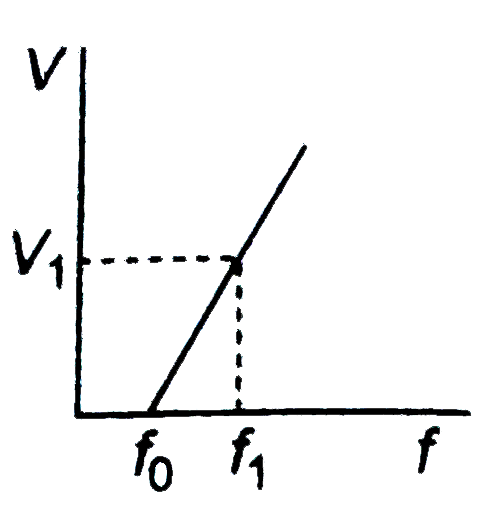
hf2
V1(f1−f0)
h(f1−f0)
eV1(f1−f0)
The correct Answer is:C
Kmax=hf1−ϕ0=hf1−hf0=h(f1−f0).
Topper's Solved these Questions
- ELECTRONS AND PROTONSBOOK - MHTCET PREVIOUS YEAR PAPERS AND PRACTICE PAPERSCHAPTER - ELECTRONS AND PROTONSEXERCISE - MHT CET CORNER
19 Videos
- ELECTRONS AND PROTONSBOOK - MHTCET PREVIOUS YEAR PAPERS AND PRACTICE PAPERSCHAPTER - ELECTRONS AND PROTONSEXERCISE - Exercise 1
50 Videos
- ELECTROMAGNETIC INDUCTIONBOOK - MHTCET PREVIOUS YEAR PAPERS AND PRACTICE PAPERSCHAPTER - ELECTROMAGNETIC INDUCTIONEXERCISE - MHT CET CONER
34 Videos
- ELECTROSTATICSBOOK - MHTCET PREVIOUS YEAR PAPERS AND PRACTICE PAPERSCHAPTER - ELECTROSTATICSEXERCISE - MHT CET Corner
29 Videos
Similar Questions
The variation of photocurrent with collector potential for different frequencies of incident radiation v1,v2,v3 is as shown in the the graph , then
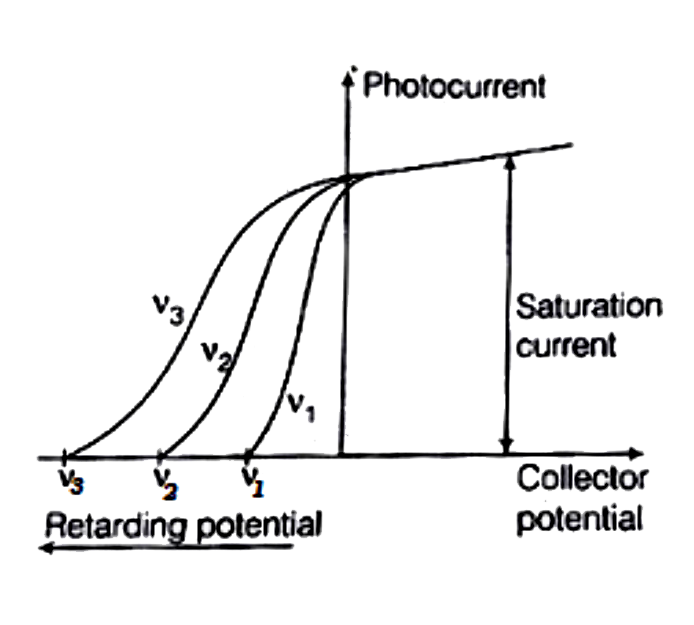
View SolutionIn a photoelectric experiment, the potential required to stop the ejection of electrons from cathode is 4V. What is the value of maximum kinetic energy of emitted Photoelectrons?
View Solution
Knowledge Check
Photoelectric emission is observed from a surface for frequencies v1 and v2 of the incident radiation (v1>v2). If the maximum kinetic energies of the photoelectrons in two cases are in ratio 1:K then the threshold frequency v0 is given by.
Av2−v1K−1BKv1−v2K−1CKv2−v1K−1Dv2−v1KIf photons of frequency v are incident on the surfaces of metals. A and B of threshold frequencies v2 and v3 respectively, the ratio of the maximum kinetic energy of electrons emitted from A to that from B is
A2:3B3:4C1:3D√3:√2In a photoelectric effect experiment, the maximum kinetic energy of the emitted electrons is 1eV for incoming radiations of frequency v0 and 3eV for incoming radiation of frequency 3v0/2. What is the maximum kinetic energy of the electrons emitted for incomming radiation of frequency 9v0/4?
A3eVB4.5eVC6eVD9eV
In the study of a photoelectric effect the graph between the stopping potential V and frequency v of the incident radiation on two different metals P and Q is shown in fig.
(i) which one of two metals have higher threshold frequency
(ii) Determine the work function of the metal which has greater value
(iii) Find the maximum kinetic energy of electron emitted by light of frequency 8×1014Hz for this metal.
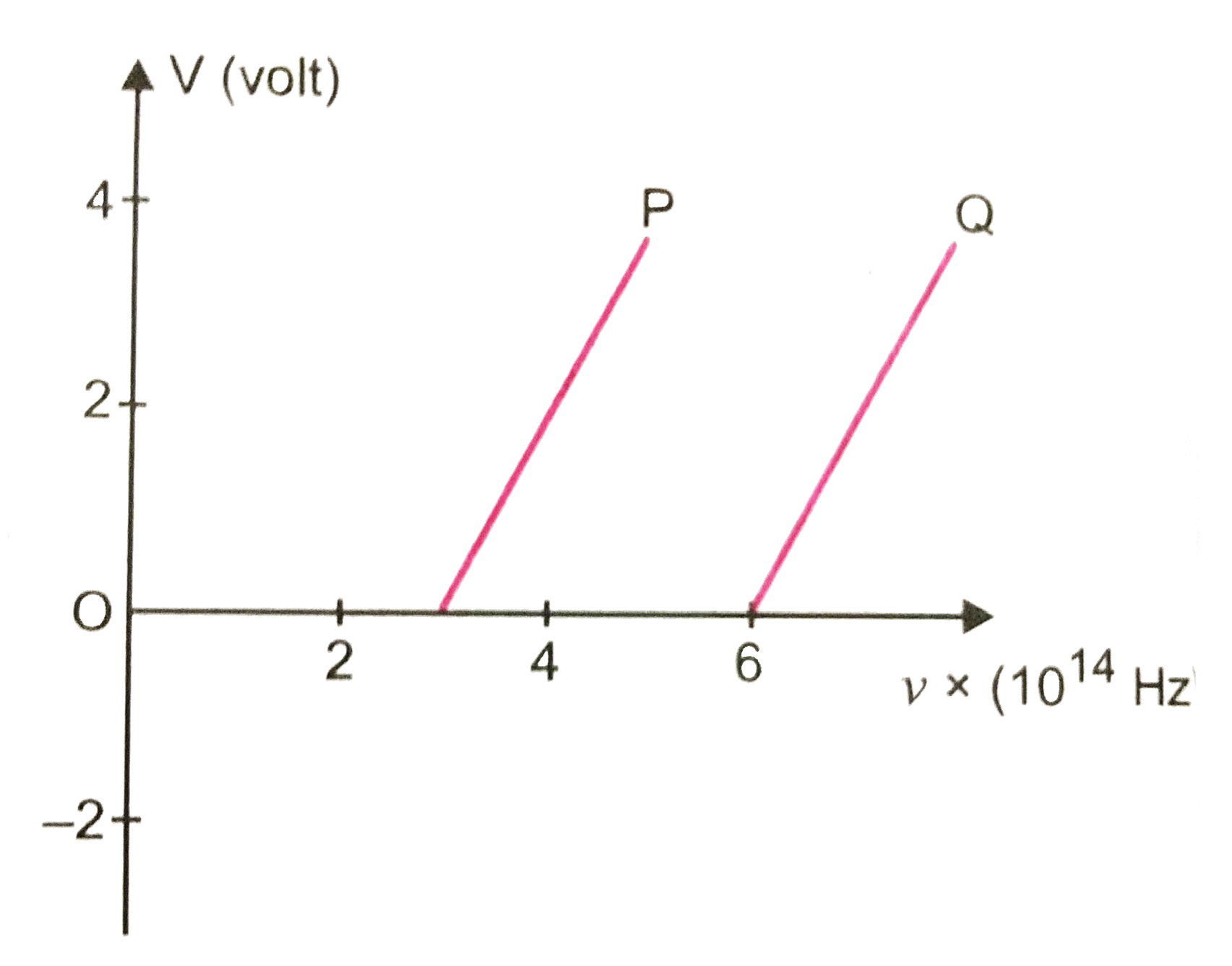
View SolutionIf photons of frequency μ are incident on the surfaces of metals A & B of threshold frequencies μ2 and μ3 respectively,the ratio of the maximum kinetic energy of electrons emitted from A to that from "B" is
View SolutionThe graph of Fig. shows the variation of photoelectric current with collector plate potential for different frequencies of incident radiations.
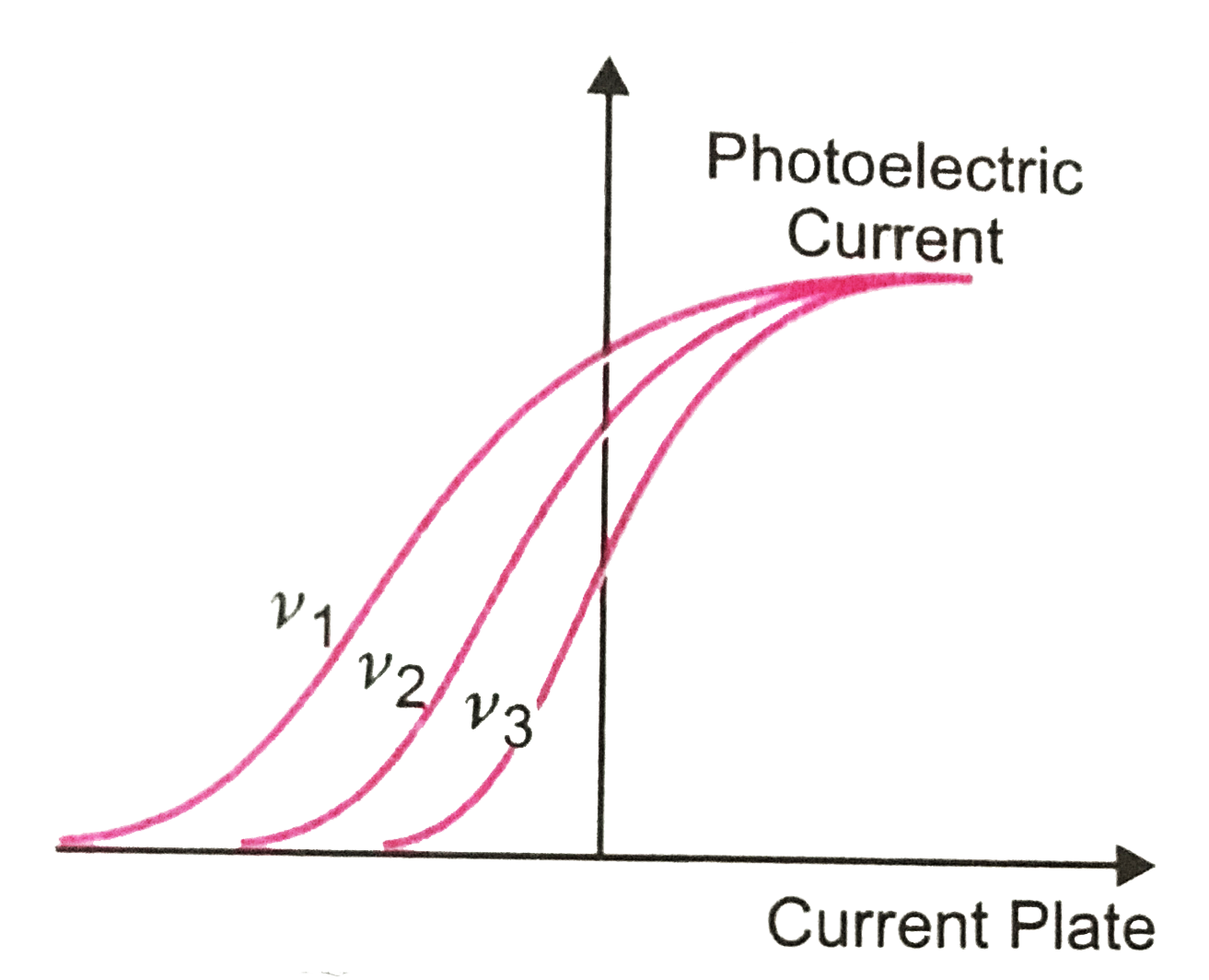
(i) Which physical parameter is kept constant for the three curves?
(ii) Which frequency (v1,v2orv3) is the highest?
View SolutionPhotoelectric emission is observed from a metal surface for frequencies v1 and v2 incidents radiations (v1>v2). If the maximum kinetic energy of the two electrons are in the ratio 1:2, then how is threshold frequency (v∘) experssed.
View SolutionIn an experiment on photoelectric effect the frequency f of the incident light is plotted against the stopping potential V0. The work function of the metal is given by ( e is the electronic charge)
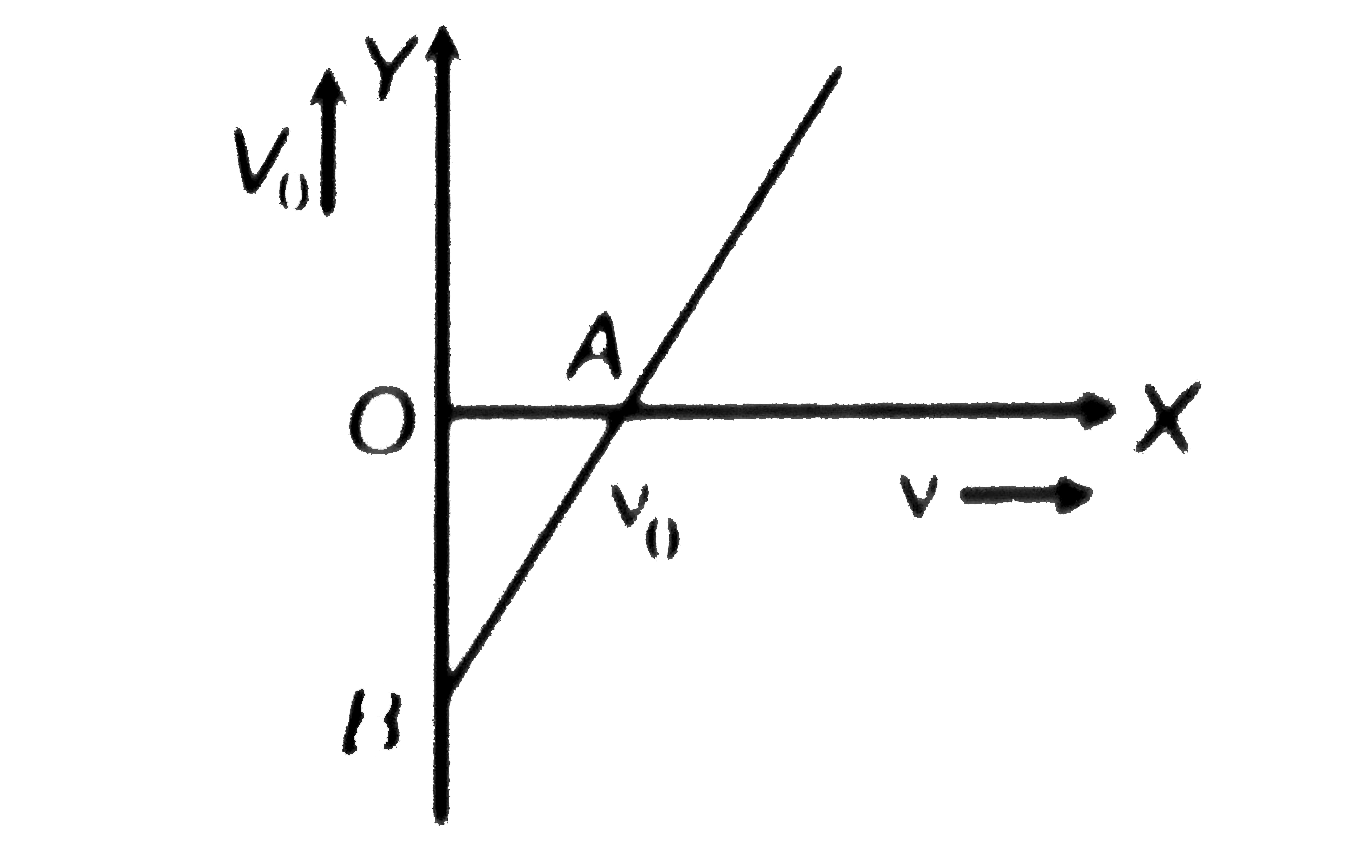
View Solution
